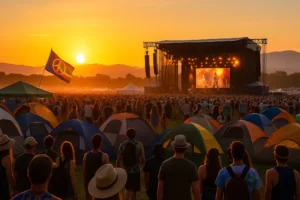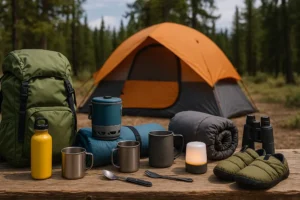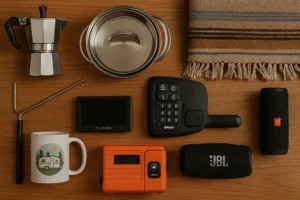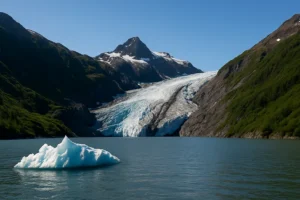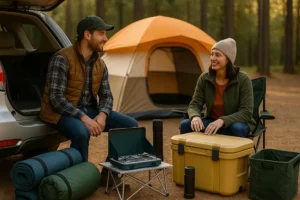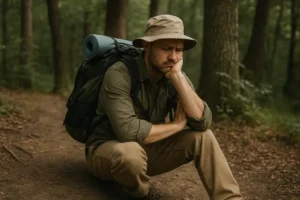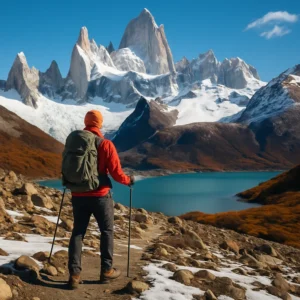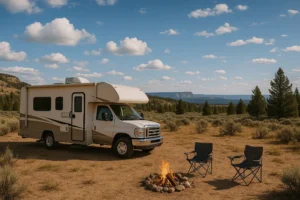If you’ve ever dreamed of escaping to the mountains or falling asleep under the stars, you’ve probably asked yourself this question: should I rent my camping gear or buy it? It’s a classic outdoor dilemma. And with more companies offering complete rental setups—from tents and sleeping bags to entire 4WD adventure rigs—it’s easier than ever to just rent and go.
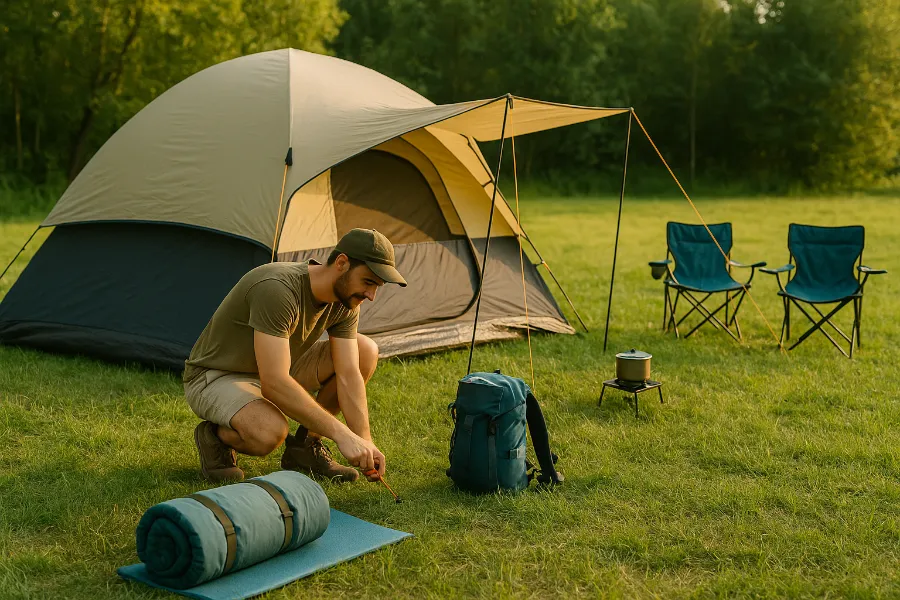
But before you pack your car (or book that weekend in Yosemite), it’s worth knowing the real pros and cons of renting camping gear. Renting can save you money, storage space, and even stress—but it’s not always the best long-term solution. Let’s break down what you should know before your next outdoor adventure.
The Rise of Camping Gear Rentals
A decade ago, the idea of renting camping gear might have sounded odd. Today, it’s a booming trend. Outdoor rental services like REI Co-op, KitLender, Rooze, and Frontier Tourers have changed the game—offering everything from ultralight tents to fully equipped vehicles for weekend warriors and curious beginners alike.
What’s driving this shift? It’s simple. More people are seeking meaningful, affordable ways to explore nature without committing to thousands of dollars’ worth of equipment. Whether you’re flying cross-country, heading to a festival, or just trying camping for the first time, gear rentals make it all accessible.
For city dwellers with tiny apartments and no garage space, gear rentals have become the key to weekend freedom—no storage, no maintenance, no problem.
The Pros of Renting Camping Gear
1. Cost Savings for Occasional Campers
Let’s face it—good gear is expensive. A quality six-person tent can cost $500 or more. Add sleeping bags, pads, a stove, and a cooler, and you’re easily over $1,000 before you even leave home.
Renting, on the other hand, makes outdoor trips financially feasible. For example, REI rents a family tent for around $70 for a long weekend, saving you hundreds of dollars you can put toward park passes, gas, or that much-needed post-hike pizza.
If you only camp a few times a year, buying gear simply doesn’t make sense. Renting keeps your costs low and lets you spend more on the experience itself—not the equipment collecting dust in your closet.
2. Try Before You Buy
If you’re new to camping, you might not know the difference between a dome tent and a tunnel tent—or whether you prefer a mummy sleeping bag or a rectangular one. Renting lets you experiment before committing to big purchases.
Testing different brands and styles can help you learn what works best for you. Maybe you’ll discover that the lightweight tent you rented for backpacking was a breeze to set up—or that you’d rather splurge on a thicker sleeping pad next time.
Renting is your real-world demo experience. It’s like test-driving your outdoor lifestyle.
3. Eco-Friendly and Sustainable Choice
Here’s something not everyone thinks about: every new tent, stove, or sleeping bag comes with an environmental cost. From production to packaging, manufacturing outdoor gear requires energy and materials that ultimately impact the planet.
By renting, you’re reducing demand for new products and extending the life of existing ones. According to the European Rental Association, renting equipment can reduce carbon emissions by up to 50%.
In short, renting camping gear is one of the easiest ways to camp sustainably. It’s sharing at scale—and the planet benefits.
4. Convenience and Stress-Free Travel
Renting camping gear takes a huge load off your shoulders—literally. No more late-night packing or digging through your garage for missing tent poles. Many rental companies even deliver pre-packed kits straight to your door or campsite.
Some services, like Xscape Pod or KitLender, curate full setups that include tents, pads, stoves, and utensils—all cleaned, organized, and ready to go. When you’re done, you just ship it back. No scrubbing mud off stakes or drying out a rain-soaked tent on Sunday night.
That convenience is worth its weight in marshmallows.
5. No Storage Needed
If you live in an apartment or a small home, storing camping gear can feel like playing Tetris with your closets. Tents, sleeping bags, and coolers are bulky—and let’s be honest, most of us don’t use them often enough to justify the space.
Renting eliminates the storage struggle. You get the best gear when you need it, and when you don’t, it’s out of sight and out of mind. It’s perfect for anyone short on storage—or patience.
6. Perfect for Fly-In Trips
Flying with camping gear can be a nightmare. Airlines restrict fuel canisters, stoves, and even bear spray. And even if you do manage to check everything in, oversized luggage fees can make your “budget” trip not so budget-friendly anymore.
Renting solves this completely. You can have your camping kit shipped straight to your destination—say, near Yellowstone, Yosemite, or Banff—and pick it up on arrival. No extra baggage fees, no security hassles, just you and your adventure.
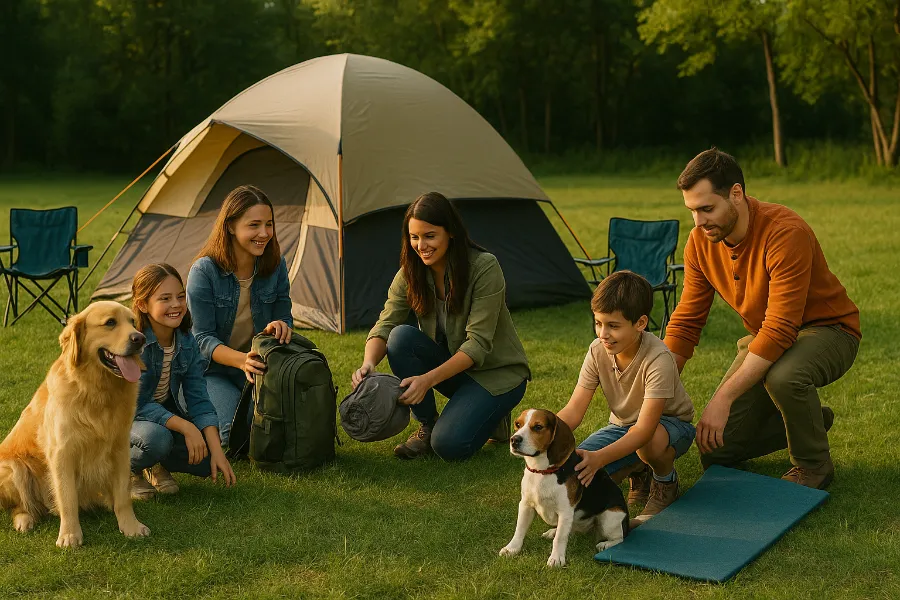
The Cons of Renting Camping Gear
Now that we’ve sung the praises of renting, let’s get real. Renting isn’t perfect. There are a few drawbacks to consider before swiping that credit card.
1. Repeated Costs Add Up
If you’re an avid camper who goes out more than a few times a year, those rental fees can quickly add up. A few weekend trips could end up costing more than buying your own tent.
Frequent campers often find that owning gear pays off in the long run—especially if you take care of it and resell it later. Renting is fantastic for the occasional trip, but not for every month.
2. Limited Availability and Customization
Rental shops carry a wide selection, but it’s not endless. You might have to settle for a heavier tent than you’d like, or a sleeping bag that’s warmer (or cooler) than ideal.
Customization is also limited—your preferred brand, color, or comfort level might not be available. For picky campers or gear enthusiasts, this can feel restrictive.
3. Hygiene and Comfort Concerns
Let’s be honest: not everyone treats rental gear gently. While reputable companies clean their inventory thoroughly, some people simply prefer their own sleeping bag or pillow for hygiene reasons.
Personal items like camp pillows, liners, and even sleeping bags can be worth buying outright, especially if you’re squeamish about shared gear.
4. Risk of Damage Fees or Missing Gear
Most rental companies require you to sign an agreement holding you responsible for any lost or damaged items. Tear a tent floor, bend a pole, or lose a stake? You might be on the hook for repair or replacement costs.
That’s why it’s crucial to inspect all gear before you leave the shop or campsite. Check for missing parts, test zippers, and photograph any existing wear—just like you would with a rental car.
5. Lack of Familiarity
Using unfamiliar gear can be frustrating—especially when you’re setting up camp in the dark. If you’ve never pitched that brand of tent before, or don’t know how the stove ignites, it could slow you down.
Regular campers often appreciate knowing their gear inside and out. It’s that muscle memory that makes setup quick and stress-free.
When to Rent vs. When to Buy
Here’s a quick rule of thumb:
| Rent Gear If… | Buy Gear If… |
|---|---|
| You’re camping once or twice a year | You camp regularly or every season |
| You’re flying to your destination | You travel by car and camp locally |
| You have limited storage space | You have a garage or basement |
| You’re testing new hobbies (kayaking, backpacking) | You’ve found your preferred gear style |
| You’re on a budget and just starting out | You want long-term savings and familiarity |
In short, rent for flexibility—buy for familiarity. Many campers end up doing a mix of both, renting bulky items and owning personal essentials.
Tips for Renting Camping Gear Wisely
If you’ve decided that renting makes sense for your next adventure, here are a few tips to make it smooth and affordable:
- Compare prices. Check both local outfitters and online companies like KitLender, LowerGear, or REI. Rates can vary widely.
- Bundle up. Renting a full camping package (tent, pads, stove, and chairs) often costs less than renting each item individually.
- Inspect before departure. Make sure zippers, poles, and stoves work properly before heading out.
- Check rental terms carefully. Ask about damage fees, late returns, and cleaning charges.
- Bring your own small items. Personal things like headlamps, utensils, and pillows are inexpensive to own and easy to pack.
- Look for local pickup. If you’re visiting a national park, check nearby towns for gear rental shops—they often have more affordable rates and insider knowledge.
Final Thoughts
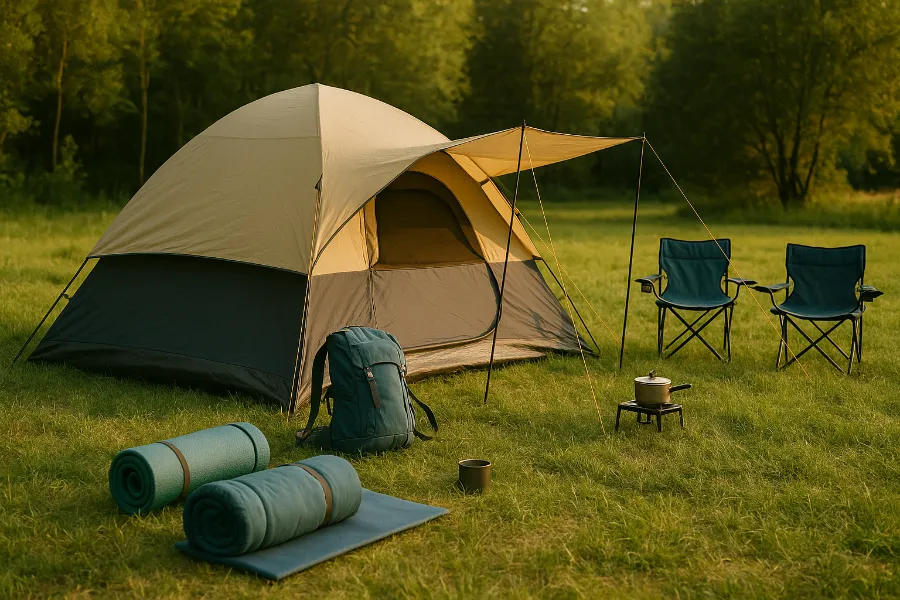
The pros and cons of renting camping gear come down to one thing: how often you camp. For beginners, travelers, and occasional weekenders, renting is a no-brainer—it’s affordable, sustainable, and wonderfully convenient.
But if you’ve fallen in love with the smell of pine and the crackle of campfires, owning your own setup might make more sense in the long run. You’ll know your gear inside out, save money over time, and always be ready for a spontaneous trip.
Ultimately, the best choice isn’t about the gear—it’s about getting outside. Renting just removes the barriers so you can focus on what really matters: the adventure itself.

